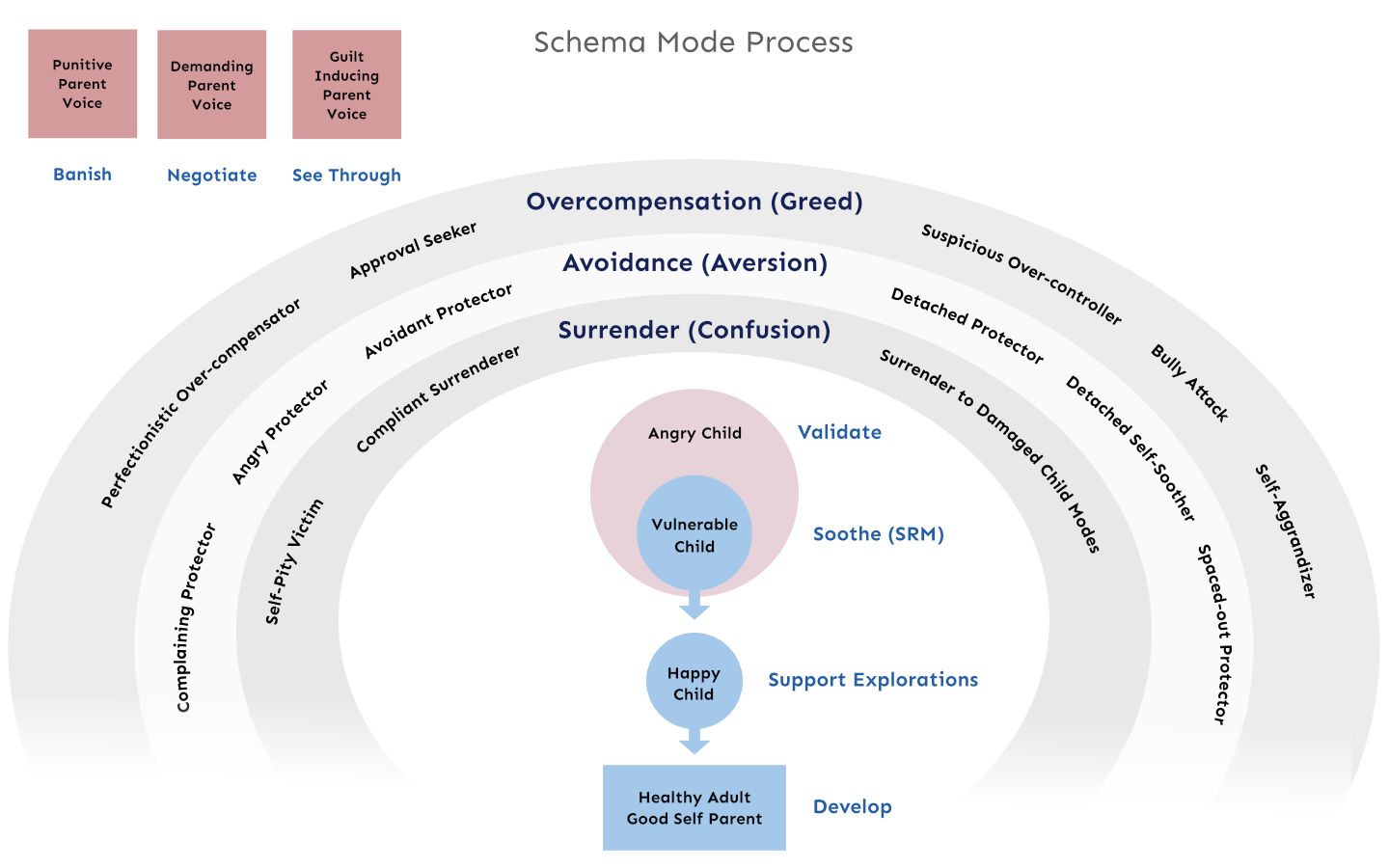This list is based on my perspective as to how Jeffrey Young’s ‘Early Maladaptive Schemas’ relate to insecure attachment. More info on the 18 schemas here: http://www.schematherapy.com/id73.htm
General Insecurity
11 – Insufficient Self-Control / Self-Discipline
Dismissing
3 – Emotional Deprivation (central)
4 – Defectiveness / Shame (central)
5 – Social Isolation / Alienation
10 – Entitlement / Grandiosity
17 – Unrelenting Standards / Hypercriticalness
18 – Punitiveness
Preoccupied
1 – Abandonment / Instability (central)
3 – Emotional Deprivation
6 – Dependence / Incompetence
7 – Vulnerability to Harm or Illness
8 – Enmeshment / Undeveloped Self
9 – Failure to Achieve
12 – Subjugation
13 – Self-Sacrifice
14 – Approval-Seeking / Recognition-Seeking
15 – Negativity / Pessimism
Disorganized
1 – Abandonment / Instability
2 – Mistrust / Abuse (central) (additionally: fear and manipulation)
3 – Emotional Deprivation
4 – Defectiveness / Shame
5 – Social Isolation / Alienation
6 – Dependence / Incompetence
7 – Vulnerability to Harm or Illness
8 – Enmeshment / Undeveloped Self
9 – Failure to Achieve
10 – Entitlement / Grandiosity
12 – Subjugation
13 – Self-Sacrifice
14 – Approval-Seeking / Recognition-Seeking
15 – Negativity / Pessimism
17 – Unrelenting Standards / Hypercriticalness
18 – Punitiveness
